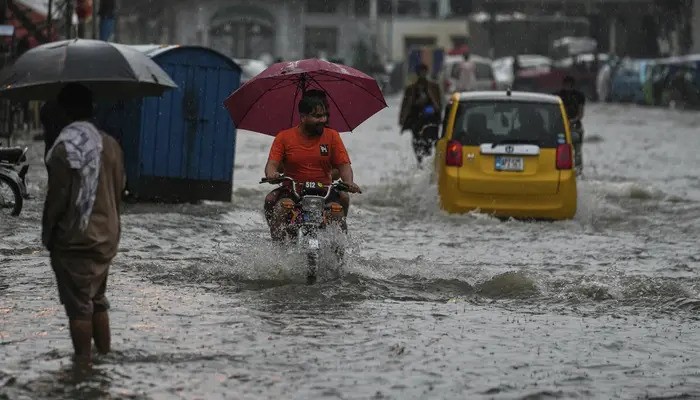Monsoon floods have turned deadly once again in Pakistan. In the last 24 hours alone, heavy monsoon rainfall has killed at least 54 people in Punjab, officials reported on Thursday. The disaster adds to a grim national toll, with 178 rain-related deaths recorded across Pakistan since June 26.
Rains Surpass Historical Averages
According to the Pakistan Meteorological Department (PMD), rainfall levels across the country are 82% higher this month compared to July 2024. In Punjab, the hardest-hit region, rainfall from July 1 to July 15 exceeded last year’s numbers by a staggering 124%.
This abnormal monsoon activity has overwhelmed urban drainage systems and rural waterways, triggering flash floods and submerging several low-lying villages. Authorities have deployed rescue teams to deal with rising water levels and stranded residents.
Urban Flooding and Flash Floods
On Thursday, torrential downpours flooded major roads in Rawalpindi and Lahore. In Jhelum district, a sudden cloudburst caused dangerous flash floods. Emergency responders were seen evacuating dozens of residents using boats, as water surged into streets and homes with little warning.
The ongoing rains have continued to disrupt daily life, transportation, and access to essential services in affected cities and towns.
Widespread Impact Across Provinces
Since late June, the heavy rains have claimed lives in four provinces: Punjab, Sindh, Khyber Pakhtunkhwa (KP), and Balochistan. Flash floods, building collapses, electrocutions, and drowning incidents have been reported. KP and Balochistan have seen roads washed away and communication lines damaged, making rescue efforts more difficult.
In Sindh, authorities are monitoring water levels around vulnerable districts near the Indus River, where overflow remains a serious threat.
NDMA Issues High Alert
The National Disaster Management Authority (NDMA) issued an updated flood advisory on Thursday, warning of more rain and urging local governments to remain on high alert. Officials have been instructed to activate emergency response centers and keep rescue equipment ready.
The NDMA has also advised tourists and locals to avoid visiting hilly and flood-prone regions, where landslides and road blockages could occur without notice.
Read: Monsoon Havoc Kills 43 in Punjab, Urban Flooding Wreaks Chaos in Rawalpindi, Islamabad
Response and Preparedness Efforts
Emergency relief operations are underway in various districts. Boats, divers, and medical teams have been deployed to assist with evacuations, treatment, and shelter. In some areas, makeshift camps have been set up for displaced families.
Despite warnings issued earlier in the monsoon season, poor drainage infrastructure and unregulated construction in flood-prone zones have worsened the crisis. Civil society groups and volunteers are working alongside government agencies to provide food, water, and emergency supplies to affected households.
Climate Change and Monsoon Intensification
Experts warn that climate change is driving a shift in monsoon patterns, making them more erratic and intense. The country has witnessed increasingly severe flooding in recent years, including the devastating 2022 floods that left over 1,700 dead and millions homeless.
Meteorologists say that unless long-term climate resilience and adaptation measures are implemented, Pakistan will continue to suffer large-scale human and economic losses during the monsoon season.
Looking Ahead
The PMD forecasts more rain across much of the country in the coming days, including in northern and central regions. Authorities are closely monitoring river flows and dam levels to prevent further disasters.
As the monsoon persists, Pakistan’s response will be tested again—highlighting the urgent need for better flood management, early warning systems, and climate preparedness.
Follow us on Instagram, YouTube, Facebook,, X and TikTok for latest updates
